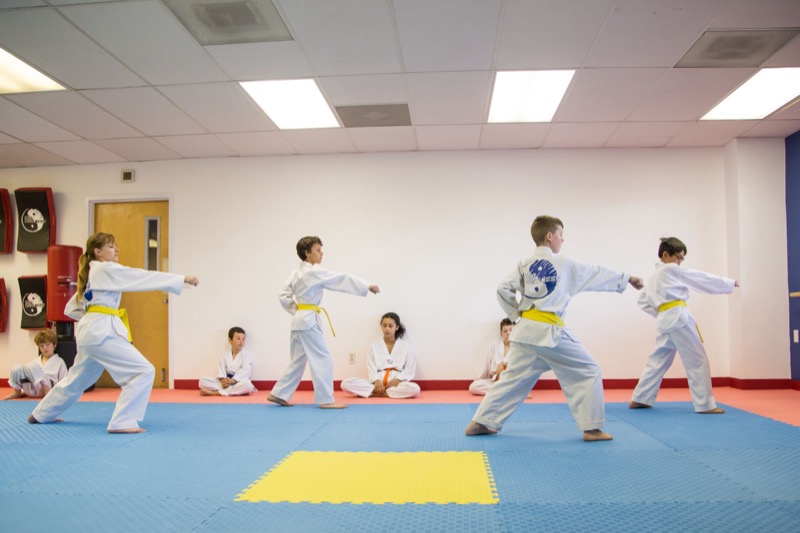
Starting a new activity like Taekwondo can be both exciting and a little intimidating, especially for young children stepping into their first martial arts class. As a parent, you want to ensure this new journey is a positive and enriching experience. Taekwondo, a Korean martial art renowned for its dynamic kicking techniques and emphasis on discipline, offers not just physical benefits but also the opportunity to develop mental clarity, respect, and self-discipline.
This guide will walk you through what to expect in your child’s first Taekwondo class, helping to ease any apprehension and ensure a smooth introduction to this transformative practice.
Understanding Taekwondo
Before attending the first class, it’s helpful to understand what Taekwondo is all about. Originating in Korea, Taekwondo emphasizes head-height kicks, jumping and spinning techniques, and rapid strikes. Its name reflects its core elements: “Tae” (foot), “Kwon” (fist), and “Do” (the way or path).
However, Taekwondo is much more than a physical practice. It instills core values like respect, humility, perseverance, and discipline. These traits often carry over into daily life, helping children develop confidence, focus, and a sense of responsibility.
Preparing Your Child for Their First Class
1. Attire
Your child may not have a uniform, known as a dobok, before their first class, and that’s perfectly fine. Most dojangs (training halls) allow beginners to wear comfortable athletic clothing. Once enrolled, your child will likely receive or purchase a dobok, which becomes an integral part of their training experience.
Key Tips for Attire and Hygiene:
- Footwear: Taekwondo is practiced barefoot, so ensure your child’s feet are clean and nails are trimmed.
- Comfortable Clothing: Choose attire that allows free movement if a uniform isn’t required.
- Personal Hygiene: Encourage your child to wash their hands and face before class to maintain cleanliness.
2. Mental Preparation
Talk to your child about what to expect. Emphasize that their first class is about learning and having fun, not about perfection. Let them know it’s okay to make mistakes—the goal is to improve over time. Highlight the importance of respect for their instructor and peers, as these are foundational principles in Taekwondo.
Arrival at the Dojang
Arriving a few minutes early gives your child time to get comfortable in the new environment. Upon entering the dojang, greet the instructor, often referred to as sabum or master. This establishes a respectful rapport and helps your child feel more at ease.
Etiquette to Observe:
- Bow before entering the dojang: This gesture shows respect and marks the transition from everyday life into the focused training space.
- Punctuality: Arriving early prevents stress and sets a positive tone for the class.
The Structure of a Typical Class
Taekwondo classes for beginners are structured and engaging, combining physical activity with discipline and focus. Here’s a breakdown of what you can expect:
1. Warm-Up
The class usually starts with a 10–15 minute warm-up to prepare the body for physical activity. Warm-ups may include:
- Stretching to improve flexibility.
- Light cardio like running or jumping jacks.
- Basic strength exercises such as push-ups or sit-ups.
Warm-ups not only prevent injuries but also help children transition into an active mindset.
2. Learning Basic Techniques
After warming up, the class will introduce foundational Taekwondo techniques. These may include:
- Kicks: Basic moves like the front kick (Ap Chagi) and side kick (Yeop Chagi).
- Punches and Blocks: Simple punches and defensive stances. This stage focuses on form and coordination, encouraging children to pay attention to details.
3. Forms (Poomsae)
Students may practice poomsae, which are choreographed patterns of movements combining strikes, kicks, and blocks. These routines:
- Enhance balance and coordination.
- Teach the importance of flow and precision.
- Reinforce focus and discipline.
4. Partner Drills and Sparring
For older or more advanced beginners, partner drills may be introduced. These activities encourage:
- Collaboration with peers.
- Practicing timing and accuracy in a controlled environment. (Note: Sparring is usually reserved for more experienced students and involves protective gear.)
5. Cool-Down and Reflection
Classes typically conclude with a cool-down period, including light stretching and breathing exercises. Instructors may also take time to reflect on the day’s lessons, reinforcing key values like respect and perseverance.
Supporting Your Child After Class
After their first class, take some time to talk to your child about their experience. Ask open-ended questions like:
- “What was your favorite part of class?”
- “What’s something new you learned?”
- “Is there anything you found challenging?”
Celebrate their effort, regardless of performance, and encourage them to keep practicing.
The First Step in a Lifelong Journey
Taekwondo isn’t just an activity; it’s a journey of personal growth. Your child’s first class is the first step toward improved fitness, confidence, and resilience. With your encouragement and the guidance of skilled instructors, they will find joy and empowerment in this ancient martial art.
Written by AI & Reviewed by Clinical Psychologist and Head Coach: Yoendry Torres, Psy.D.
Disclaimer: Please note that some blog posts may contain affiliate links, and TKD Wellness will earn a commission if you purchase through those links at no additional cost to you. We use all of the products listed and recommend them because they are companies or products that I have found helpful and trustworthy. Our website is supported by our users.